CLEVELAND, Ohio -- So many communities, so little time.
The arrival of Halloween culminates with a fun night of trick-or-treating with some adventurous youth calculating canvassing routes to maximize their haul.
Here’s a look at what Northeast Ohio cities and areas have planned for the candy-centric affair:
Akron: 5 to 7 p.m. Saturday, Oct. 25
Amherst: 6 to 7:30 p.m. Friday, Oct. 31
Amherst Township: 1 to 3 p.m. Sunday, Oct. 26
Ashland: 5 to 7 p.m. Thursday, Oct. 30
Ashtabula: 5 to 7 p.m. Saturday, Nov. 1
Aurora: 6 to 8 p.m. Friday, Oct. 31
Avon: 6 to 7:30 p.m. Thursday, Oct. 30
Avon Lake: 6 to 7:30 p.m. Friday, Oct. 31
Bath Township: 5 to 7 p.m. Sunday, Oct. 26
Bellville: 5 to 6:30 p.m. Thursday, Oct. 30
Boston Heights: 6 to 8 p.m. Friday, Oct. 31
Brecksville: 6 to 8 p.m. Friday, Oct. 31
Brook Park: 6 to 8 p.m. Friday, Oct. 31
Brooklyn: 6 to 8 p.m. Friday, Oct. 31
Brooklyn Heights: 6 to 8 p.m. Friday, Oct. 31
Brunswick: 6 to 8 p.m. Friday, Oct. 31
Canton: 3 to 5 p.m. Sunday, Oct. 26
Chagrin Falls: 6 to 8 p.m. Friday, Oct. 31
Chardon: 5:30 to 7:30 p.m. Friday, Oct. 31
Chippewa Lake: 6 to 7:30 p.m. Friday, Oct. 31
Cleveland: 6 to 8 p.m. Friday, Oct. 31
Copley: 5 to 7 p.m. Sunday, Oct. 26
Coventry Township: 5:30 to 8 p.m. Saturday, Oct. 25
Cuyahoga Falls: 6 to 8 p.m. Saturday, Oct. 25
Dover: 5 to 7 p.m. Thursday, Oct. 30
Elyria: 6 to 7:30 p.m. Friday, Oct. 31
Fairlawn: 5 to 7 p.m. Sunday, Oct. 26
Fairview Park: 6 to 8 p.m. Friday, Oct. 31
Geneva: 4 to 6 p.m. Sunday, Oct. 26
Green: 6 to 8 p.m. Saturday, Oct. 25
Hudson: 6 to 8 p.m. Friday, Oct. 31
Jackson Township: 3 to 5 p.m. Sunday, Oct. 26
Kent: 4 to 6 p.m. Sunday, Oct. 26
Lakewood: 6 to 8 p.m. Friday, Oct. 31
Lyndhurst: 6 to 8 p.m. Friday, Oct. 31
Macedonia: 6 to 8 p.m. Friday, Oct. 31
Madison: 6 to 8 p.m. Saturday, Oct. 30
Massillon: 3 to 5 p.m. Sunday, Oct. 26
Mentor: 6 to 8 p.m. Friday, Oct. 31
North Canton: 3 to 5 p.m. Sunday, Oct. 26
North Olmsted: 6 to 8 p.m. Friday, Oct. 31
North Ridgeville: 6 to 7:30 p.m. Friday, Oct. 31
North Royalton: 6 to 8 p.m. Friday, Oct. 31
Northfield Center: 6 to 8 p.m. Friday, Oct. 31
Northfield Village: 6 to 8 p.m. Saturday, Oct. 25
Norton: 5 to 7 p.m. Saturday, Oct. 25
Norwalk: 6 to 7:30 p.m. Friday, Oct. 31
Oakwood: 6 to 8 p.m. Friday, Oct. 31
Oberlin: 6 to 7:30 p.m. Friday, Oct. 31
Olmsted Falls: 6 to 8 p.m. Saturday, Nov. 1
Olmsted Township: 6 to 8 p.m. Saturday, Nov. 1
Orange: 6 to 8 p.m. Friday, Oct. 31
Orrville: 6 to 8 p.m. Friday, Oct. 31
Painesville: 6 to 8 p.m. Friday, Oct. 31
Parma: 6 to 8 p.m. Friday, Oct. 31
Peninsula: 6 to 8 p.m. Friday, Oct. 31
Pepper Pike: 6 to 8 p.m. Friday, Oct. 31
Ravenna: 3 to 5 p.m. Saturday, Oct. 25
Reminderville: 6 to 8 p.m. Friday, Oct. 31
Rittman: 5 to 7 p.m. Saturday, Oct. 25
Sagamore Hills: 6 to 8 p.m. Friday, Oct. 31
Sandusky: 6 to 8 p.m. Friday, Oct. 31
Shaker Heights: 6 to 7:30 p.m. Friday, Oct. 31
Solon: 6 to 8 p.m. Friday, Oct. 31
South Amherst: 6 to 7:30 p.m. Saturday, Oct. 25
Stow: 5:30 to 7:30 p.m. Saturday, Oct. 25
Streetsboro: 6 to 8 p.m. Saturday, Nov. 1
Strongsville: 6 to 8 p.m. Friday, Oct. 31
Tallmadge: 5:30 to 7 p.m. Thursday, Oct. 30
Twinsburg: 5:30 to 7 p.m. Friday, Oct. 31
Willoughby: 6 to 8 p.m. Friday, Oct. 31
If you purchase a product or register for an account through a link on our site, we may receive compensation. By using this site, you consent to our User Agreement and agree that your clicks, interactions, and personal information may be collected, recorded, and/or stored by us and social media and other third-party partners in accordance with our Privacy Policy.

 440-202-1706
440-202-1706




 Service Areas
Service Areas























